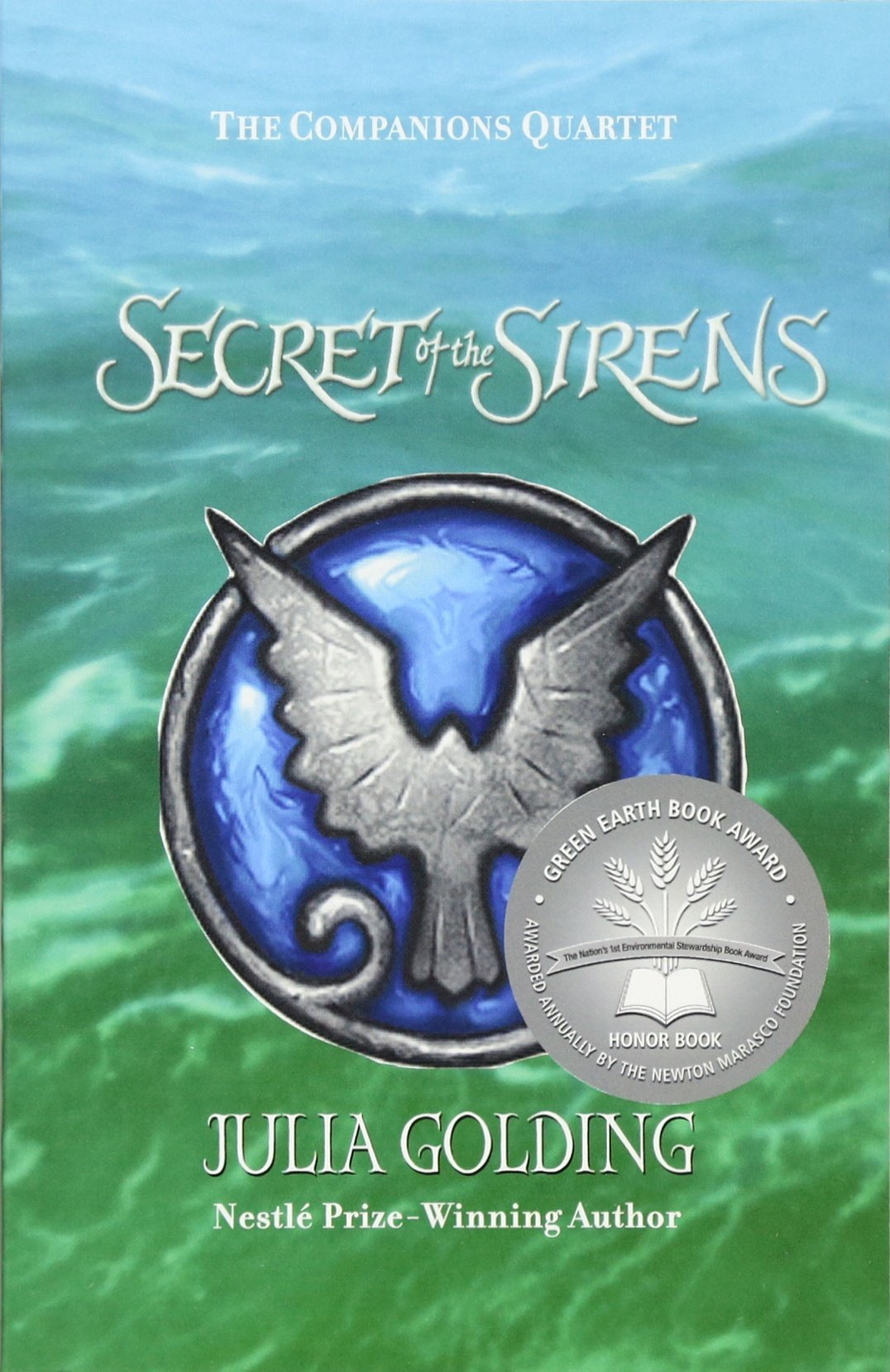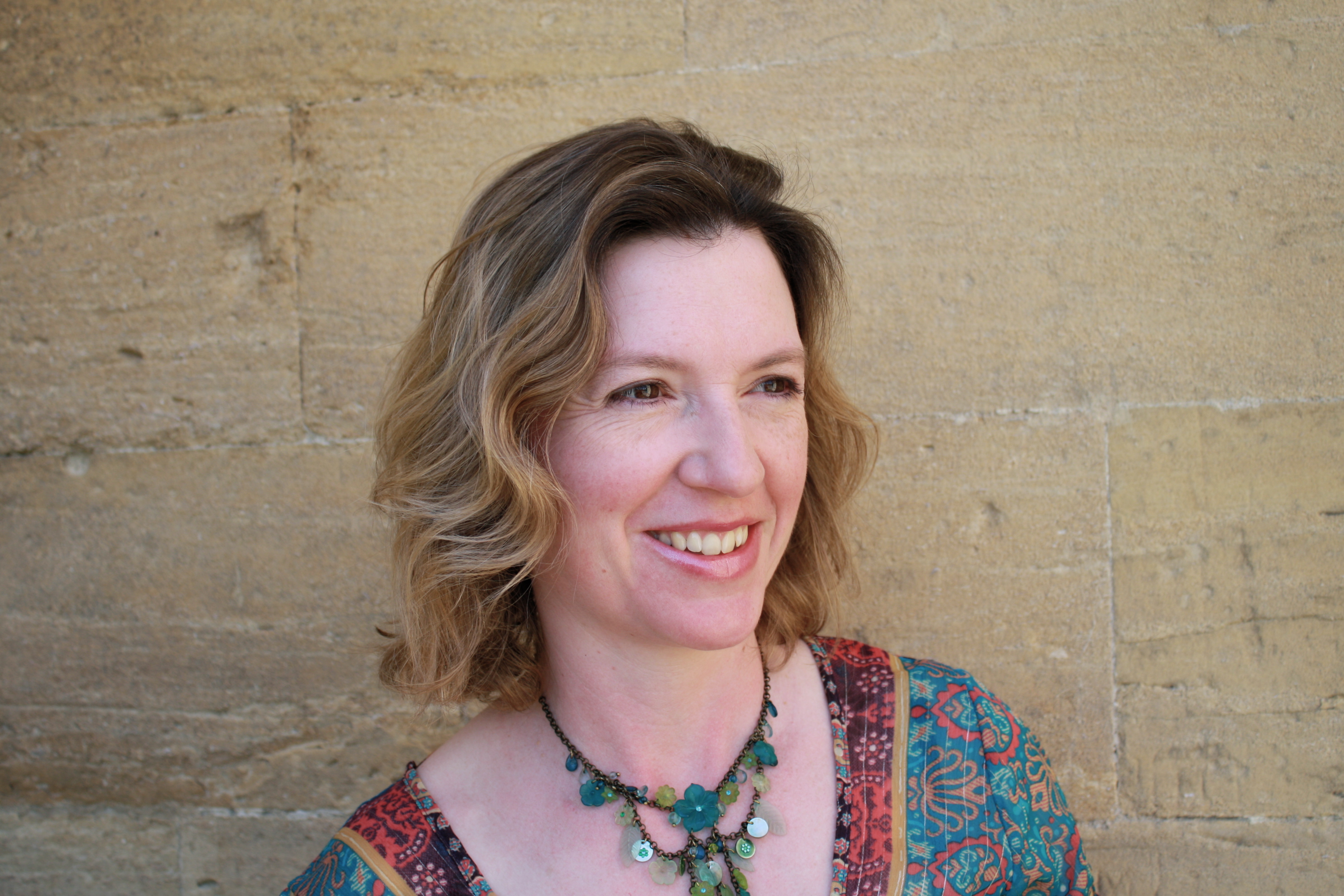Title of the work
Country of the First Edition
Country/countries of popularity
Original Language
First Edition Date
First Edition Details
Julia Golding, The Companions Quartet. Secret of the Sirens. Oxford: Oxford University Press, 2006, 357 pp.
ISBN
Awards
2008 – An honor book medal of the Green Earth Book Award (for The Secret of the Sirens)
Genre
Bildungsromans (Coming-of-age fiction)
Fantasy fiction
Novels
School story*
Teen fiction*
Target Audience
Young adults
Cover

Cover design by David Wyatt, the Author’s permission for non-commercial use.
Author of the Entry:
Elżbieta Olechowska, University of Warsaw, elzbieta.olechowska@gmail.com
Peer-reviewer of the Entry:
Susan Deacy, University of Roehampton, s.deacy@roehampton.ac.uk

Courtesy of the Author.
Julia Golding
[Eve Edwards, Joss Stirling] , b. 1969
(Author)
Born in Ilford, Essex, in the vicinity of an area of ancient woodland called Epping Forest, she studied English literature at the University of Cambridge. Later, after working as a diplomat for the British Foreign Office in Poland, she resumed her studies at Oxford obtaining a PhD in English literature. She then worked for the international charitable organization Oxfam, as a lobbyist on the impact of conflicts. She now lives in Oxford and writes full time: from 2006, the date of her first novel, she has written over thirty books, among them The Companions Quartet (2006-2007), a cycle of novels with numerous references to Greek mythology. In 2011, she published a sequel to the Quartet, entitled Water Thief, labelled as Universal Companions 1; as of June 10, 2017, it remains the only volume of the new series.
Golding writes also historical romance for adolescents under the pseudonym Eve Edwards and romance novels for teens as Joss Stirling.
Literary Awards:
- 2006 – Waterstone's Children's Book Prize, Nestle Children's Book Prize,
- 2007 – Waterstone's one of the "Twenty-five authors for the future",
- 2008 – An honor book medal of the Green Earth Book Award for The Secret of the Sirens (The Companions Quartet 1),
- 2012 – Beehive Book Award, Young Adult Division, awarded by the Children's Literature Association of Utah,
- 2015 – Romantic Novel of the Year (Struck by Joss Stirling).
She was also nominated or shortlisted for a number of the same and other awards.
Sources:
Official website (accessed: May 29, 2018),
Profile at the literature.britishcouncil.org (accessed: July 3, 2018),
Profile at the www.goodreads.com (accessed: April 9, 2018).
Bio prepared by Elżbieta Olechowska, University of Warsaw, elzbieta.olechowska@gmail.com
Sequels, Prequels and Spin-offs
The other three books of the cycle are discussed in separate entries:
- Julia Golding, The Companions Quartet. Book 2: The Gorgon’s Gaze, Oxford: Oxford University Press, 2006.
- Julia Golding, The Companions Quartet. Book 3: Mines of the Minotaur, Oxford: Oxford University Press, 2007.
- Julia Golding, The Companions Quartet. Book 4: The Chimera’s Curse, Oxford: Oxford University Press, 2007.
Summary
An 11-year-old girl, Connie, is considered a freak because of a strong mutual attraction and affinity she feels for various animals and birds. She has to change schools often and is finally sent to stay with her aunt and continue her education in the small seaside village of Hescombe, in south-west England. It is progressively revealed that creatures we know from mythology are real and live still today but hidden from the majority of people; there is a millennium-old society protecting mythological creatures from discovery in order to ensure their survival. Society members are people with a mysterious link to one or more species of such creatures; they are called "companions." The link allows them to communicate and bond with the creatures. There is a very special kind of companion – called "universal" – who can communicate with all creatures. Connie proves to be a universal, the only one in existence at the present time.
A group of Hescombe sirens inhabiting the offshore rocks revolt against people taking over their territories: an oil refinery has been encroaching on wildlife areas, and sirens, desperately trying to defend their home, let themselves be seduced by the propaganda of a malevolent spirit and shape-shifter (Kullervo) who hates humanity and is bent on the destruction of people and world domination. The sirens do not have a local companion who could defuse their anger and they refuse to listen to the society members. As a first act of hostility, the sirens kill several of the refinery employees. When Connie arrives, the sirens are happy to meet a universal but she is unable to change their mind. Still, they agree to postpone further hostilities until the autumn. Some other mythical creatures, for instance weather giants, seem to be colluding with the evil spirit and also involve in the plot their companions. Connie meets more society members, as well as more mythical creatures, some of them known in antiquity, others drawn from mythology of other cultures. After initial difficulties in being officially recognized by the society, Connie begins her training as a companion, a process much more complex than usual because of the universal character of her gift. The ability to be a companion is transmitted genetically and in some families, companions are born in each generation.
As a universal companion, Connie is very important to Kullervo who kidnaps her and all seems lost when help from her friends comes and she is rescued by a black dragon Morjik and Skylark, a Pegasus, whose companion is Colin, Connie’s friend from school. In the meantime, the sirens attempt to destroy an oil tanker as a symbol of threat to the environment, but they are foiled in their plans by a sea monster Kraken whose companion convinces him to help save the ship. Connie is attacked again by the evil spirit but she manages to vanquish him. For the time being, the disaster is averted and the society, with the help of school children and teachers, ensures protection for the sirens’ habitat.
Analysis
The use of mythical creatures, such as sirens, Pegasus and dragons, is obviously the main reason for including the book in the database. Numerous other mythological characters in the novel come from non-classical mythologies but each book in the cycle focuses on one specific hybrid creature from Greek mythology: book one on sirens, book two on the Gorgons (The Gorgon’s Gaze), book three on the Minotaur (Mines of the Minotaur), and book four on Chimera (The Chimera’s Curse). In the first book, humanity is accused of not protecting the natural environment out of greed and lack of compassion and understanding. The oil industry and its ruthless short-term business goals are used in the book as a symbol of unreasonable and unsustainable development driven by greed and ultimately leading to a disastrous outcome. This short-sighted tendency to push for excessive industrial development out of sync with nature endangers all wildlife but especially mythical creatures who must remain a secret if they are to survive. When people forget that they are part of nature, nature who can be wild and unforgiving may turn its power against them; nature when endangered becomes also easier to manipulate by malevolent forces, such as Kullervo.
The author uses mythological creatures to build up the novel’s environmental message combining it with the theme of origin of classical and other myths. This creates additional, less didactic, arguments for the preservation of nature and brings imagination into the stereotypical pro-environmental narrative.
There are obvious parallels with J.K. Rowling’s Harry Potter novels: an eleven-year-old comes to a new school and new environment and learns of her special and unique powers and destiny. It appears that her gift makes her one of a kind in the world and a natural member of a secret community founded a thousand years ago. She also finds out that her family played an important role in society during past centuries. Her exceptional ability marks her as the only warrior qualified to fight and vanquish the evil threatening the world but she is fighting evil not as a lone hero: victory is possible only when her friends – human and mythological – work together and help each other. At the end of the novel, the protagonist manages to avert disaster and temporarily block the advance of the malevolent force but it is still waiting to regroup and attack again, a sinister foreshadowing of what is to come in the remaining three sequels.
The intended readers are young adolescents. The author has a wonderful imagination naturally required in a fantasy novel but the quality of writing is uneven, especially when dramatic suspense slows down, descriptions and dialogues sound unconvincing and unauthentic which combined with the simplicity of the environmental, anti-big business message prevents the novel from crossing over to a more mature and sophisticated audience.
Further Reading
Golding, Julia, Welcome to My Gateway (accessed: July 28, 2020).
Smith, Jules, Critical Perspective (accessed: July 28, 2020).
Stoffel, Christian, “Protecting the Ancient Past and Its Mythical Beasts: Julia Golding’s The Companions Quartet” in Katarzyna Marciniak, ed., Chasing Mythical Beasts… The Reception of Creatures from Graeco-Roman Mythology in Children’s & Young Adults’ Culture as a Transformation Marker, Warszawa: XX, 2018 (forthcoming).
Addenda
Julia Golding, One Author, Three Names, posted on YouTube, January 10, 2014, 2:38 min. (accessed: August 3, 2018).


